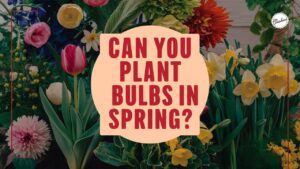In this guide, we will explore summer flowers that can add beauty to your garden while also attracting pollinators and providing a feast for the eyes.
Black-eyed Susan
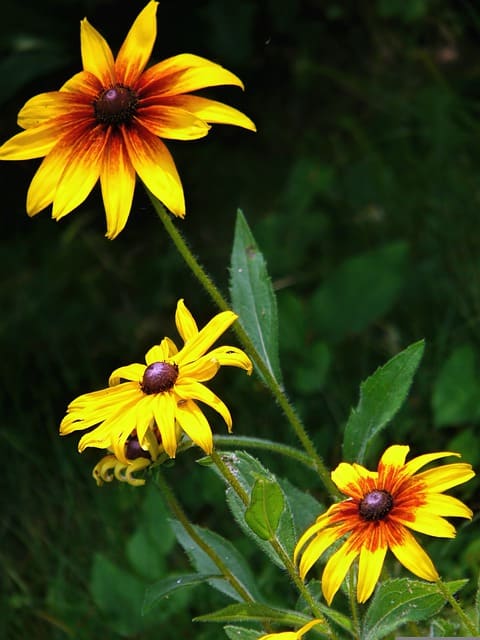
Black-eyed Susans are a quintessential summer flower in Ontario, known for their iconic dark brown centers and bright yellow petals. These hardy perennials bloom from mid-summer to early fall and are admired for their ability to thrive in various soil types. They not only add a splash of color to any garden but also attract butterflies and bees, making them an essential choice for pollinator gardens.
Coneflower
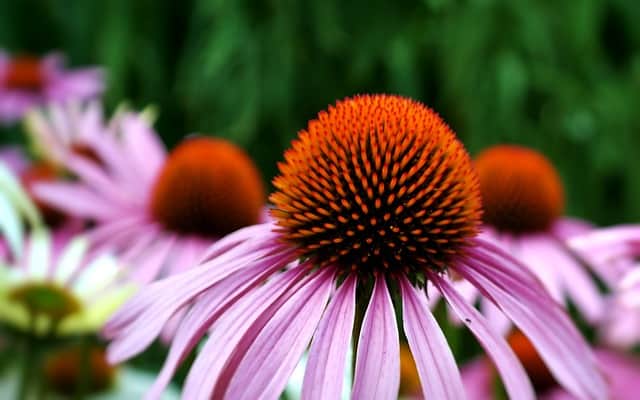
Echinacea, commonly known as coneflower, is another popular summer flower in Ontario. With its striking, daisy-like blooms in shades of pink, purple, and white, coneflowers provide a burst of color while also being drought-resistant. They attract pollinators, including butterflies and bees, and are known for their medicinal properties, making them a practical and beautiful addition to any garden.
Daylily
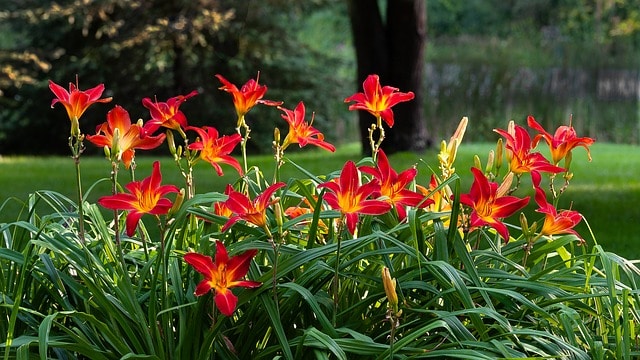
Daylilies are celebrated for their captivating blooms that last just a single day, but the plant itself produces multiple blooms throughout the summer. These flowers come in an array of colors, from vibrant yellows to deep reds, creating an eye-catching display. Daylilies are incredibly hardy, tolerate various soil conditions, and require minimal maintenance, making them perfect for both experienced gardeners and beginners.
Shasta Daisy
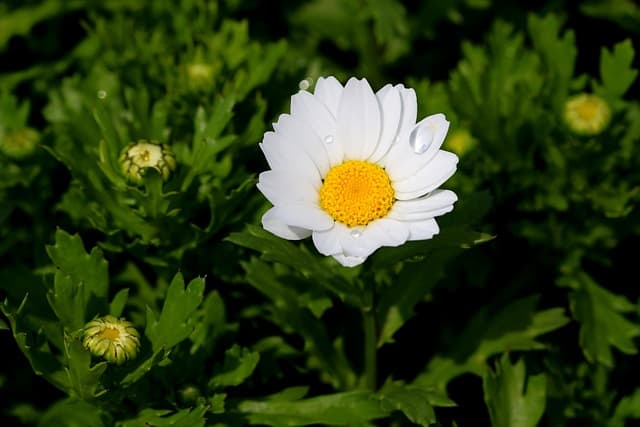
With their bright white petals and sunny yellow centers, Shasta daisies are a cheerful addition to any summer garden. These perennial flowers bloom from early summer to early fall, providing a long season of interest. They thrive in full sun and well-drained soil, and their classic look pairs beautifully with a variety of other summer flowers. Moreover, they are excellent for floral arrangements, adding a touch of brightness to indoor spaces.
Bee Balm
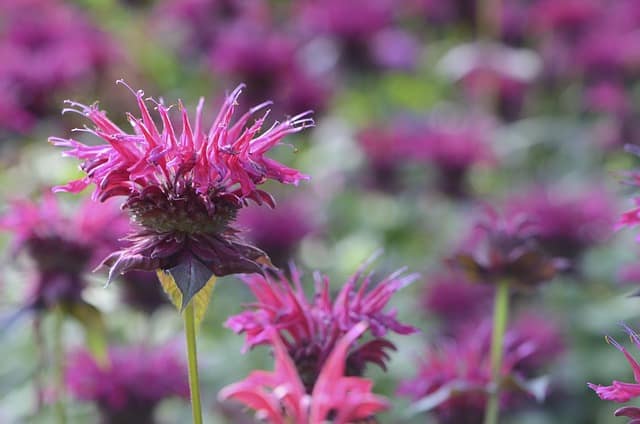
Bee balm, or Monarda, earns its name for its incredible ability to attract bees, butterflies, and hummingbirds. Its unique, spiky flowers come in shades of red, pink, purple, and white, creating stunning focal points in any garden. Bee balm is not only a feast for the eyes but also has culinary uses, as its leaves can be used in teas. It thrives in sunny locations and moist soil, making it a favorite among gardeners seeking to support local wildlife.
Lavender
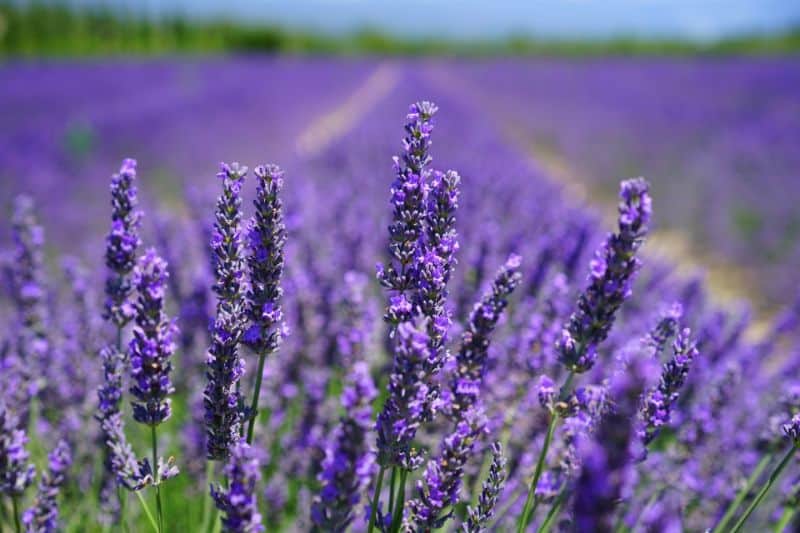
Lavender is renowned for its delightful fragrance and striking purple flowers. This Mediterranean herb is well-suited for Ontario’s warm summers, provided it receives full sunlight. Lavender is perfect for garden borders or in containers, and it also attracts pollinators. Beyond its aesthetic appeal, its essential oils are ideal for relaxation and culinary uses, adding a multipurpose element to your summer garden.
Coreopsis
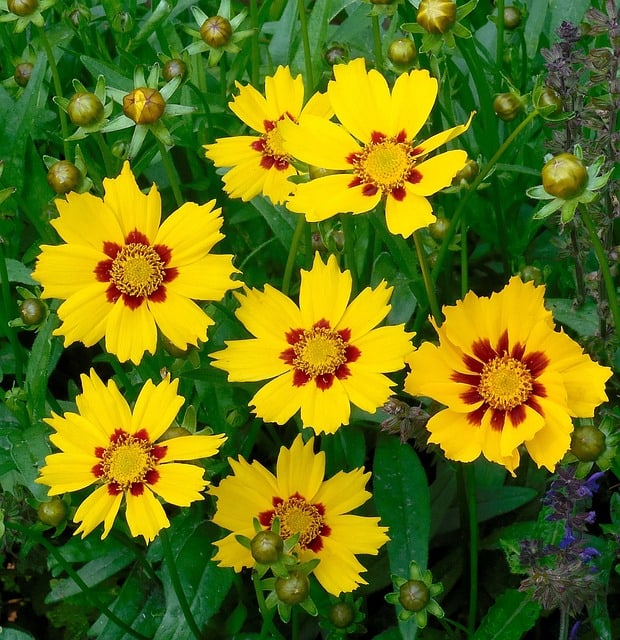
Coreopsis, also known as tickseed, is a cheerful perennial that blooms in bright yellow or gold flowers. These blooms can add a sunny disposition to any garden setting, often blooming from early summer to late fall. Coreopsis is drought-resistant and flourishes in sandy, well-drained soils, making them an ideal choice for low-maintenance gardens that need a pop of color.
Salvia
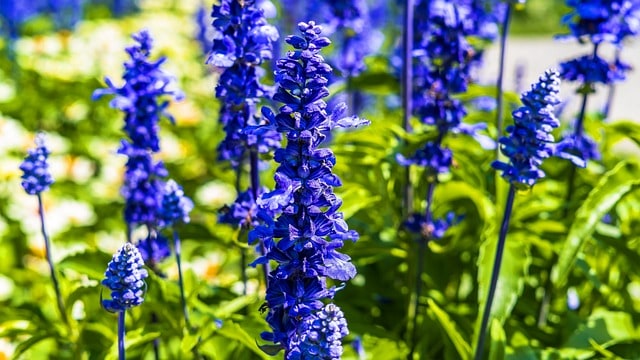
Salvia is a versatile and diverse genus of flowering plants that thrive in Ontario’s summer heat. With their tall spires adorned with purple, blue, or red flowers, salvias attract various pollinators, including hummingbirds and bees. They are also drought-tolerant once established, making them perfect for low-water gardens. Salvia makes an excellent backdrop for other perennial flowers and can lend a striking vertical element to your garden design.
Zinnia
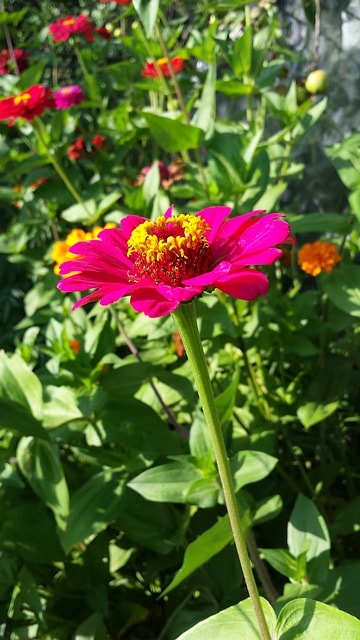
Zinnias might be best known for their bright, bold colors and long-lasting blooms. They are annuals that thrive in sunny spots and come in various shapes and sizes. Zinnias are perfect for cut-flower gardens and can bloom from summer until the first frost, making them a colorful choice for every garden enthusiast. Their vibrant blooms attract butterflies, providing additional life to your outdoor space.
Petunia
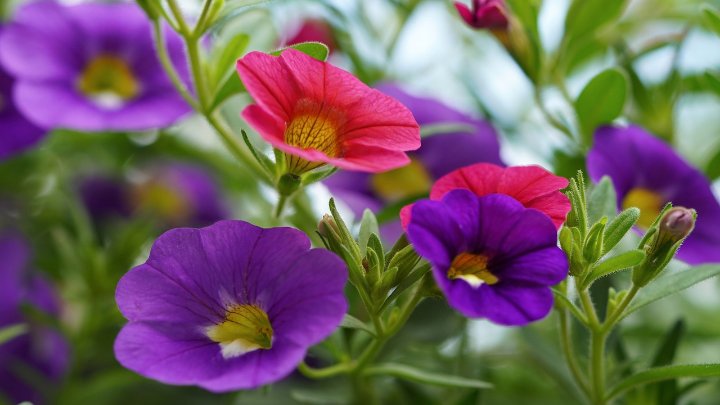
Petunias are beloved annual flowers that come in various colors, including purple, pink, red, and white. These flowers are often used in hanging baskets, window boxes, and traditional garden beds. Petunias are known for their extended blooming period throughout the summer, making them a favorite for gardeners who desire continuous color. These versatile blooms are also easy to care for and can thrive in both sunny and partly shaded areas.
Marigold
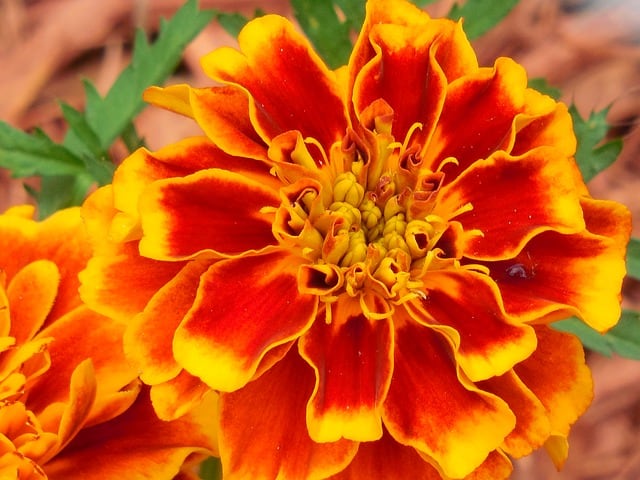
Marigolds are hardy annuals that brighten up any garden with their cheerful orange and yellow blooms. They are known for their ability to repel certain garden pests, making them a practical choice for a companion plant. Marigolds thrive in full sun and can tolerate poorer soils, adding delightful color and texture to any garden. They are also excellent in garden borders or container arrangements.
Phlox
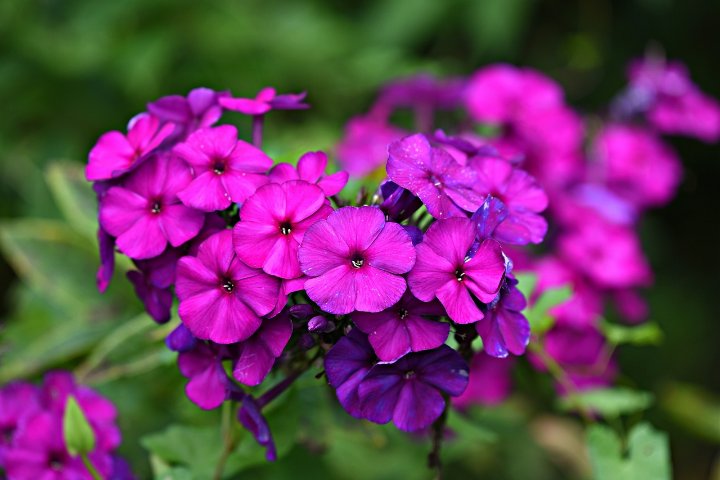
Phlox are a fantastic choice for summer gardens, with their clusters of colorful flowers ranging from pinks to purples and whites. They thrive in sunny locations and often attract butterflies. Phlox blooms from summer into early fall, providing lasting beauty throughout the warmer months. With both perennial and annual varieties, these flowers can complement any garden style, making them a versatile choice.
Foxglove
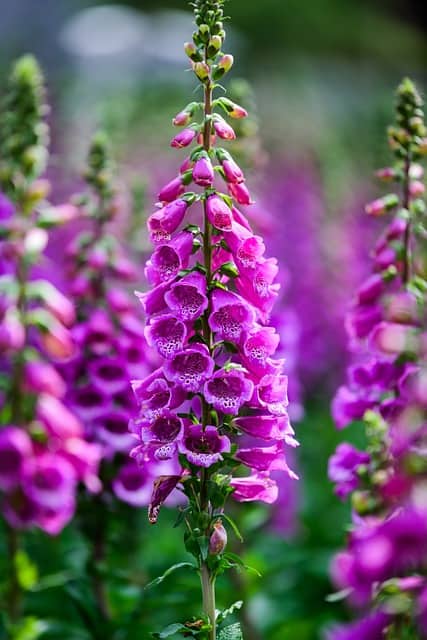
Foxglove, or Digitalis, is known for its tall spikes adorned with tubular flowers in shades of purple, pink, and white. These striking plants can reach impressive heights, making them an eye-catching addition to any summer garden. Foxgloves prefer partially shaded areas and can thrive in rich, well-draining soil. While beautiful, it’s important to note that all parts of the plant are toxic, so they should be planted with caution if children or pets are around.
Aster
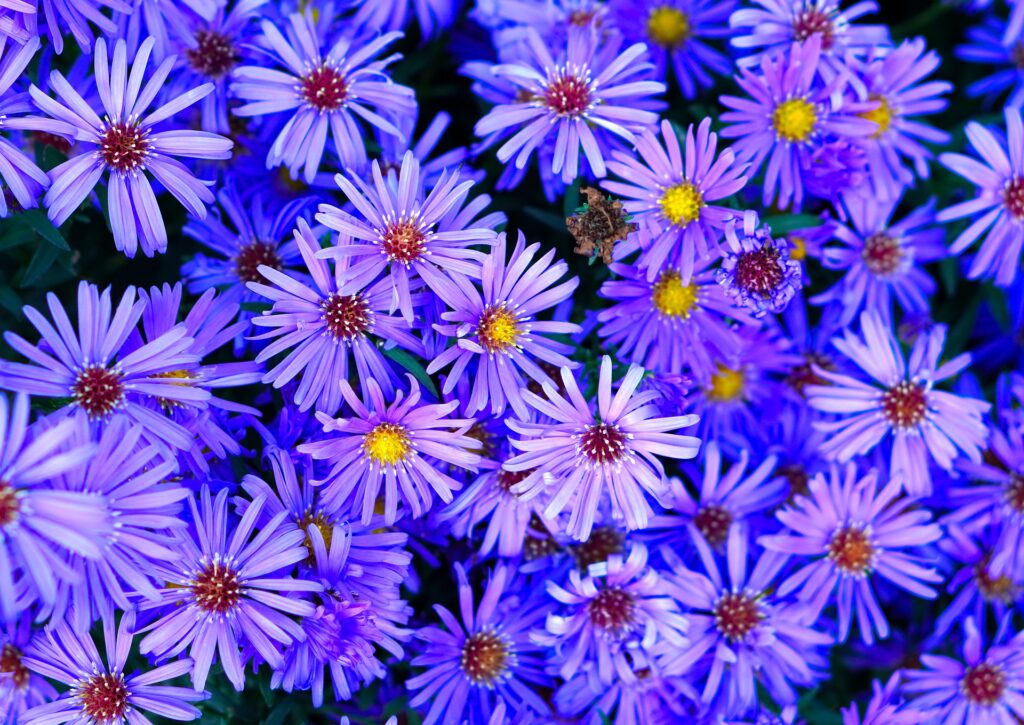
Aster is celebrated for its beautiful daisy-like flowers that bloom late in summer, adding a burst of color just when gardens need it most. With hues ranging from purple and blue to pink and white, asters can fill in garden gaps and extend the blooming season well into fall. They prefer full sun to partial shade and are a favorite among pollinators, making them an excellent design choice for wildlife gardens.
Sweet Pea
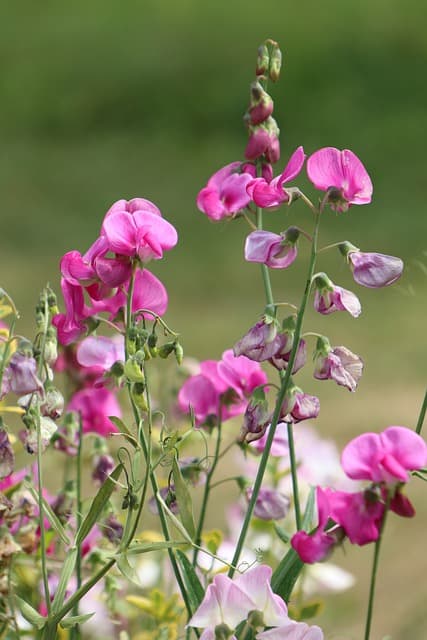
For those who enjoy a sweet fragrance in their summer gardens, sweet peas are an ideal choice. These climbing annuals produce delicate flowers in diverse colors, and they can be trained up trellises or fences. Sweet peas thrive in sunny locations with well-drained soil and require regular watering to keep blooming. Their sweet scent makes them perfect for bouquets, bringing the garden’s beauty indoors.
Hollyhock
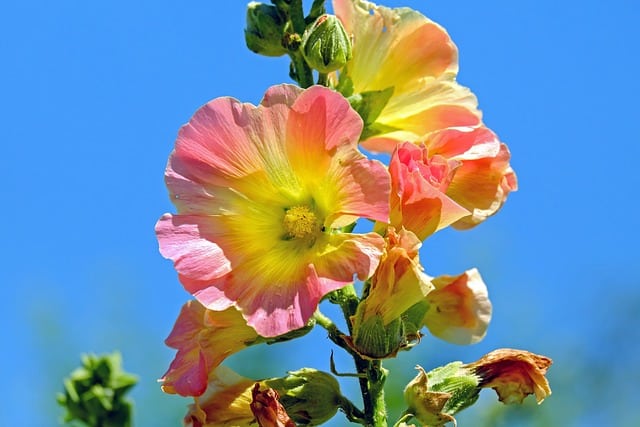
Hollyhocks are tall, old-fashioned flowers that evoke a sense of nostalgia in any garden. They come in stunning colors, including pink, white, red, and yellow, and can reach heights of up to six feet. These biennial blooms prefer sunny locations and can act as gorgeous backdrops or borders in cottage gardens. While they may require some support, their towering presence can create a dramatic effect in any garden design.
Larkspur
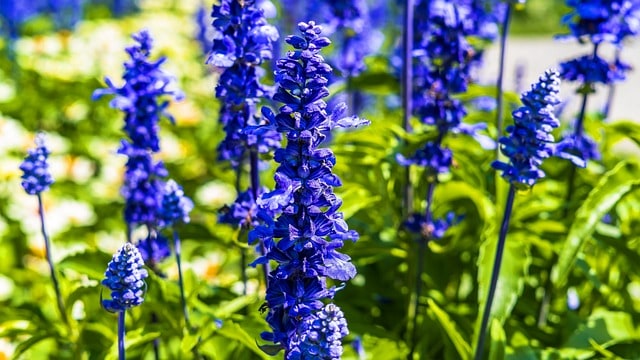
Larkspurs are striking annuals that flourish in sunny garden beds. They produce tall spikes covered in vibrant flowers, ideally used for cut-flower arrangements. Available in shades of blue, purple, pink, and white, these elegant blooms create a whimsical atmosphere in any garden. While beautiful, caution is advised, as larkspur can be toxic if ingested; they are best suited for ornamental purposes.
Cosmos
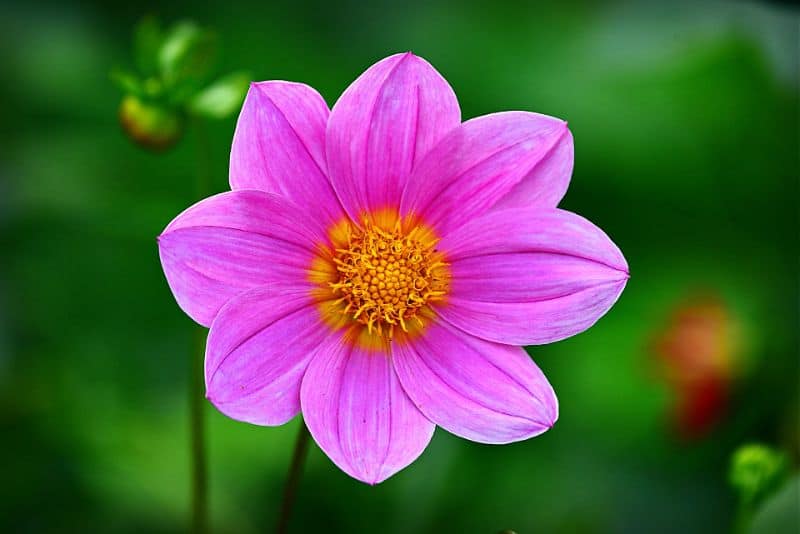
Cosmos flowers are known for their effortless beauty and ease of care. These annuals produce vibrant, daisy-like blooms in shades of pink, white, and purple, and they thrive in sunny gardens. They are drought tolerant and can grow in poor soil, making them perfect for low-maintenance gardens. Cosmos are also attractive to bees and butterflies, helping support local ecosystems.
Gaillardia

Commonly known as blanket flowers, Gaillardia features bright, multi-colored blooms that resist drought and poor soil conditions. Their unique petals are often fiery red, yellow, and orange, providing a warm, sunny burst to a summer garden. Gaillardia flowers bloom from early summer through autumn, making them excellent for extending color in the garden. They are also favorites among pollinators, ensuring your garden is bustling with life.
Scabiosa
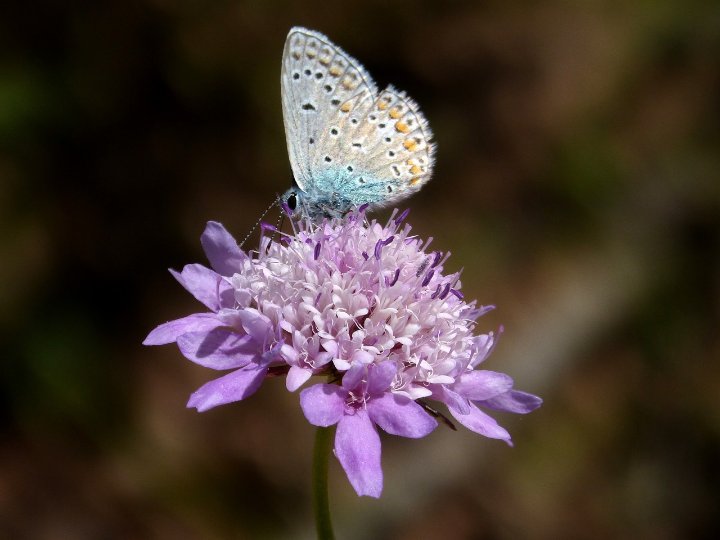
Scabiosa, or pincushion flower, offers a whimsical addition to Ontario gardens. With its unique, rounded blooms in shades of blue, purple, and white, scabiosa adds interest and texture. They can be used in borders or as focal points in flower beds and usually bloom from summer into fall. Scabiosa is also popular for attracting butterflies and other beneficial pollinators, enhancing your garden’s ecological value.
Tithonia
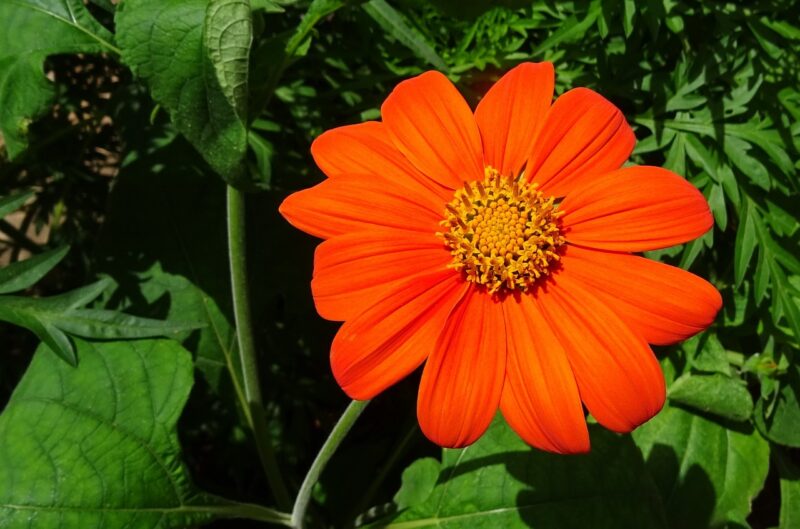
If you’re looking for a standout flower, Tithonia (Mexican sunflower) cannot be overlooked. With its vibrant orange blooms, it adds a warm glow to gardens and attracts a myriad of pollinators, particularly butterflies. This annual thrives in sunny conditions and can reach heights of over four feet. Tithonia not only offers visual appeal but also serves as a beacon for wildlife, adding charm and biodiversity to your summer landscape.
Astilbe
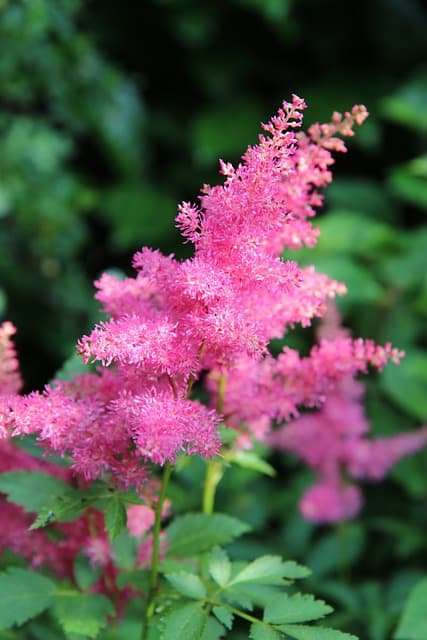
Astilbe is perfect for those with shadier gardens, providing lush foliage and feathery flower plumes that bring life to darker spots. Blooming from early to mid-summer, astilbe comes in a range of colors, including white, pink, and red. With its impressive texture, it can add depth and contrast to your flowerbeds. These perennial flowers thrive in moist, well-drained soil and can tolerate the occasional dry spell, making them manageable and rewarding.
Potentilla
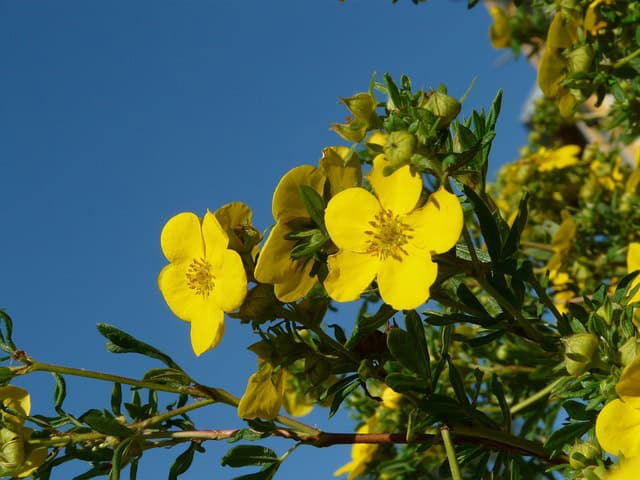
Potentilla, or cinquefoil, offers sunny charm with its delicate buttercup-like flowers. Available in hues of yellow, white, and pink, these perennial beauties add color from late spring into early summer. Potentilla is low-maintenance and drought-resistant, making it ideal for gardeners with less time or water resources. They form compact mounds, beautifully filling in borders or rock gardens, and create lovely ground cover.
Yarrow
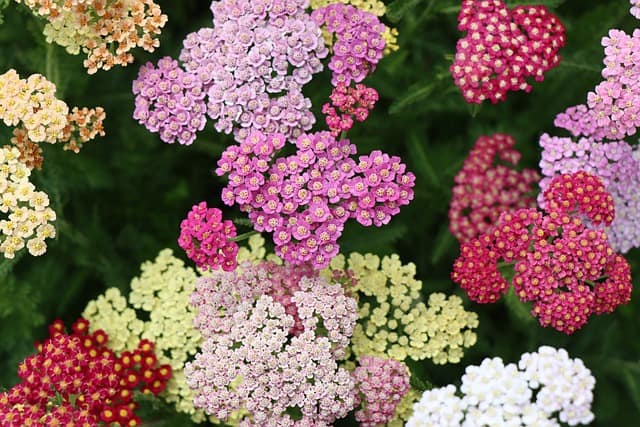
Yarrow is a rugged perennial known for its clusters of tiny flowers, which come in colors ranging from white to bright yellow and pink. These hardy plants thrive in sunny spots and poor soils, making them an excellent choice for low-maintenance gardens. Yarrow is often used for its medicinal properties and can attract pollinators, enriching both your garden’s beauty and ecological health.



